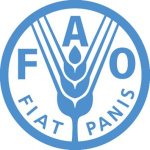- Industry: Agriculture
- Number of terms: 87409
- Number of blossaries: 0
- Company Profile:
Established in October 1945 with the objective of eliminating hunger and improving nutrition and standards of living by increasing agricultural productivity, FAO coordinates the efforts of governments and technical agencies in programs for developing agriculture, forestry, fisheries, and land and ...
1. The mitotic division of a progenitor cell to give rise to a population of identical daughter cells or clones.
2. Incorporation of a DNA molecule into a chromosomal site or a cloning vector.
3. Animal cloning: the creation of a whole animal by mitotic divisions from a single diploid somatic cell , typically by the process of nuclear transfer (q.v.). Cloning by nuclear transfer from undifferentiated embryonic cells has been possible for many years, but its widespread application has been hampered by inability to culture embryonic cells from animals other than mice. In 1997, Ian Wilmut and colleagues from Edinburgh showed that it is possible to create a whole animal from a cell taken from differentiated adult tissue, thereby opening up the possibility of widespread animal cloning.
Industry:Biotechnology
1. The natural or <i>in vitro</i> enzymatic release (removal) of a DNA segment from a chromosome or cloning vector.
2. Cutting out and preparing a tissue, organ, etc., for culture.
3. Removing adventitious shoots from callus tissue.
Industry:Biotechnology
1. The physical location where collections of genetic material in the form of seeds, tissues or reproductive cells of plants or animals are stored.
2. Field gene bank: A facility established for the <i>ex situ</i> storage and maintenance, using horticultural techniques, of individual plants. Used for species whose seeds are recalcitrant (q.v.), or for clonally propagated species of agricultural importance, such as apple varieties).
3. A collection of cloned DNA fragments from a single genome. Ideally the bank should contain cloned representatives of all the DNA sequences in the genome.
4. A population of micro-organisms, each of which carries a DNA molecule that was inserted into a cloning vector. Ideally, all of the cloned DNA molecules together represent the entire genome of another organism. Also called gene library, clone bank, bank, library. This term is sometimes also used to denote all of the vector molecules, each carrying a piece of the chromosomal DNA of an organism, prior to the insertion of these molecules into a population of host cells.
Industry:Biotechnology
1. The process involved in gathering in ripened crops.
2. The collection of cells from cell cultures or of organs from donors for the purpose of transplantation.
Industry:Biotechnology
1. The process of elimination of micro-organisms, such as by chemicals, heat, irradiation or filtration.
2. The operation of making an animal incapable of producing offspring.
Industry:Biotechnology
1. The set of 64 nucleotide triplets (codons) that specify the 20 amino acids and termination codons (UAA, UAG, UGA).
2. The relationships between the nucleotide base-pair triplets of an mRNA molecule and the 20 amino acids that are the building blocks of proteins.
Industry:Biotechnology
1. The sliding of one layer across another, with deformation and fracturing in the direction parallel to the movement. This term usually refers to the forces that cells are subjected to in a bioreactor or a mechanical device used for cell breakage.
2. To fragment DNA molecules into smaller pieces. DNA, as a very long and fairly stiff molecule, is very susceptible to hydrodynamic shear forces. Forcing a DNA solution through a hypodermic needle will fragment it into small pieces. The size of the fragments obtained is inversely proportional to the diameter of the needle's bore. The actual sites at which the shear force breaks a DNA molecule are approximately random. Therefore DNA fragments may be generated by random shear and then cloned (by either tailing their ends or using linkers) so as to create a complete gene library of an organism. This method is little used now, having been replaced by the use of partial digests with four-base-pair cutters, such as <i>Sau</i>3A, as a means of generating random DNA fragments.
Industry:Biotechnology
1. The strand of chromosomal DNA that is transcribed.
2. A DNA sequence that is complementary to all or part of an mRNA molecule.
Industry:Biotechnology
1. The total genetic information in all the genes in a breeding population at a given time.
2. In PGR: Use is made of the concept of 1, 2 and 3 (primary, secondary and tertiary) gene pools. In general, members of a 1 gene pool are inter-fertile; those of the 2 gene pool can cross with the 1 gene pool under special circumstances; with the 3 gene pool, extreme techniques are required to achieve crossing.
Industry:Biotechnology
1. The transfer between bacteria of a non-conjugative plasmid by a conjugative plasmid.
2. The transfer between bacteria of chromosomal genes by a conjugative plasmid.
Industry:Biotechnology
